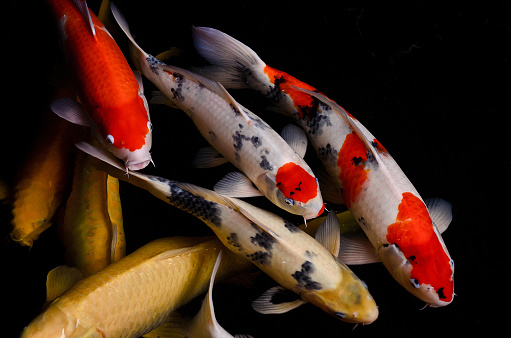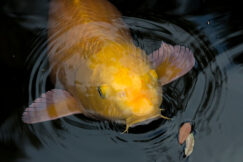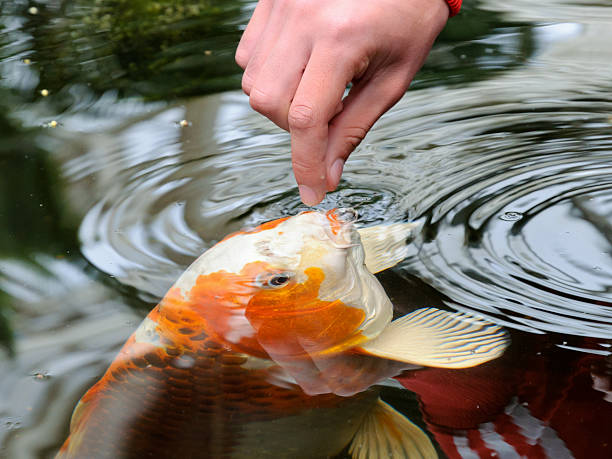For a good reason, koi fish are a popular decorative fish. They may be found in stunning koi ponds all around the world. Its size is one of its most distinguishing features. But how large can a koi fish get?
A typical Koi may grow between 24 and 36 inches long, while some ‘giant’ types can grow up to 52 inches long. However, impressive sizes are only possible if the pond conditions are ideal and the pond is large enough. In any event, growing your Koi to develop to these enormous sizes will be a difficult feat.
Each species of koi fish (there are over 100 variations!) falls into a somewhat different size group, because their size as mature individuals is typically tied more to their genetic composition than to the environment in which they live.
How big does a Domestic Koi get?
Domestic koi have the slowest growth rate of any koi kind. They often grow to be 12 to 15 inches long.
The major reason for their lower stature is heredity. Furthermore, providing the same level of care as a koi farm can is no longer possible.
How big does a Japanese Koi get?
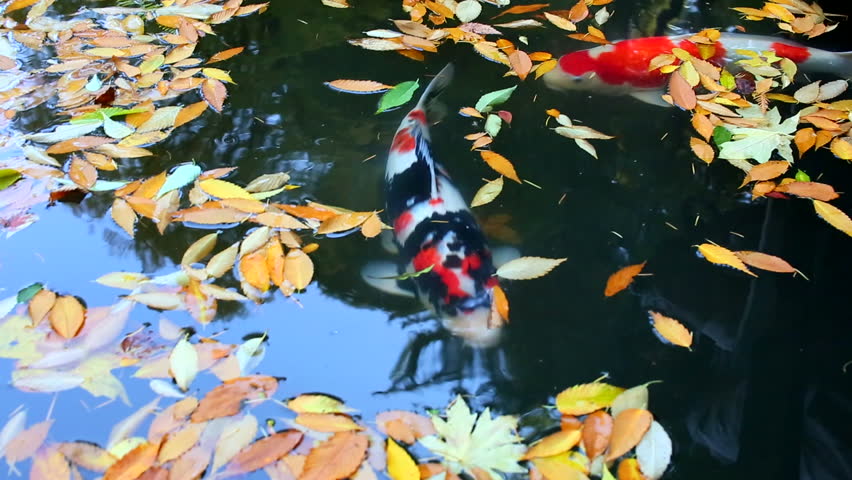
The size and color of Japanese koi make them appealing. Most Japanese koi grow to be between 22 and 26 inches long.
A Japanese koi weighs about 12 pounds on average. Some of them, though, can make it double.
They develop incredibly rapidly and enormously because of selective breeding and intense care on the farm from breeding to adulthood.
How Big Does a Jumbo Koi get?
The biggest type of koi is the jumbo koi. A Jumbo koi is at least 30 inches long and weighs more than 20 pounds.
However, bigger giant koi may grow to be 34 to 36 inches long. In addition, these gigantic koi may weigh between 22 and 26 pounds.
Jumbo Koi are selectively bred. Only selected juvenile koi are given special attention as they develop to this size.
How Big Does a Butterfly Koi get?
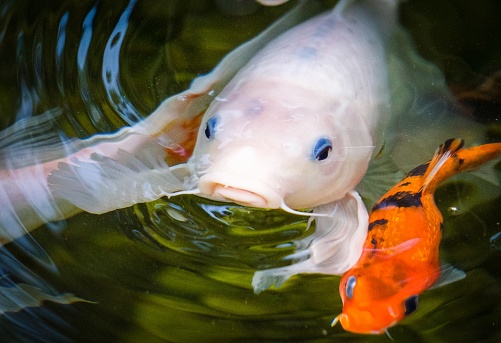
Butterfly koi, longfin koi, and dragon carp may reach lengths of 36 to 40 inches. However, the most frequent size is 24 inches.
A mature butterfly koi weighs between 12 and 16 pounds. However, some of them can reach a weight of 20 pounds.
Butterfly koi have longer fins that allow them to grow bigger. These fins will continue to expand until the blood artery can no longer deliver blood to the fin.
How Long Does It Take for a Koi Fish to Reach Mature Size?
The majority of koi fish kinds achieve maturity during the first three years of their existence.
Given that certain varieties of ornamental carp may survive well into their 60s, this is considered a rapid growth rate (Japanese koi in particular).
Domestic koi fish will grow 9 inches long by the time they reach their first birthday.
Western-bred kinds have a higher development rate, but at the price of a shorter lifetime, as opposed to Japanese-bred koi.
How Quickly Do Koi Fish Grow?
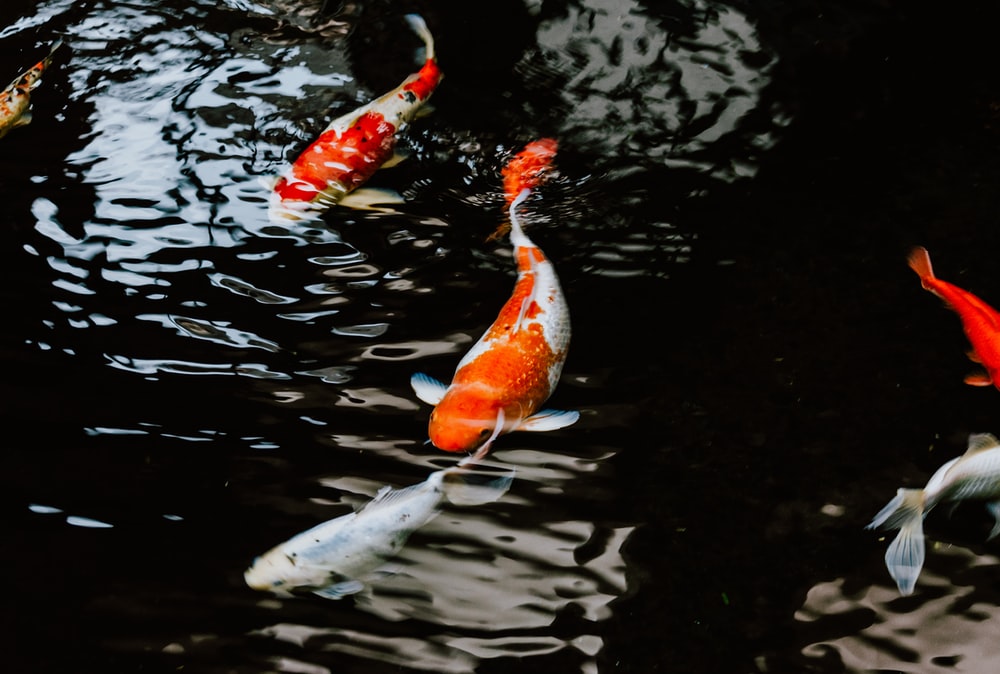
Generally, it takes roughly 3 years for the average Koi fish to reach full length. The smaller variants grow faster and may reach full size in two years or less, but these are the smaller variety.
Japanese and Jumbo Koi fish might take up to three years to mature. The normal Koi should be around 8 inches long by the end of its first year of life, with the remainder of the length coming afterward.
Factors Affecting Koi Fish Growth Rate
During their first year, koi fish normally develop at the same rate. However, following this milestone, the quality of their nutrition, the water conditions in their tank, and other factors will influence their development pace.
The following are the primary elements that might affect a koi fish’s growth rate:
The temperature of the Water
Warmer water equals a quicker metabolism; the two are inextricably linked. This correlates to faster growth rates; however, if you live in a region where your pond freezes in winter, the cold spell beneath ice will reduce the growth pace.
You’ve probably observed how quickly koi develop in an aquarium. Isn’t it much faster? That has a lot to do with a more steady and warmer temperature. According to scientific research, the best water temperature range for your koi’s maximum development is between 75 and 80 degrees F.
Sex
Female koi grow to be bigger than male koi. This is most noticeable in terms of total body bulk or girth. However, a few crucial characteristics can be used to identify sexing koi.
Stress
It has been claimed that a little stress is good for you, but a lot of stress is bad for you.
Stress such as poor water quality, parasite attack, other fish becoming hostile (bullying), evading stiletto beaks of wading birds out for a meal, abnormally high water temperatures in the middle of summer, insufficient dissolved oxygen, and so forth. These pressures, however, can cause growth rates to stall or even cease.
Food
This is a significant one. If your koi aren’t getting enough food and the right food, their development rate will suffer. These researchers discovered that extracts from the Soapbark tree (Quillaja Saponaria) boosted growth. So the ideal diet, balanced carbs, fats, and proteins, will produce the best outcomes for your fish.
Overcrowding
Many individuals appear to feel that more fish means greater fun. But, unfortunately, having 30 fish will not provide you with twice as much fun as having 15. In reality, you get additional hassles and the possibility of more difficulties with your fish.
From sickness problems to, you guessed it, reduced growth owing to space limitations. Yet, you and your fish both desire the freedom to roam around. So here’s a handy calculator to help you figure out how many fish are ideal for your pond.
Genetics
A discussion on koi growth rates would be incomplete if it did not include genetics. Throughout the day, observe the individuals around you; some are tall, while others are short. Koi, like humans, have the genetic blueprint for developing fast or slow, big or little.
Unfortunately, the question “How quickly do koi grow?” is not as simple as many would want because of all the elements involved, one of which is heredity, which cannot be disregarded.
Do Koi Grow to Fit Their Tanks?
Contrary to common perception, Koi fish do not develop to match their habitat. In other words, a koi fish genetically inclined to grow to be 15 inches long or less will not grow any larger in an outdoor pond vs. an indoor tank.
The growth rate is the sole component that is impacted by the temperature and quality of the water, as well as the size of the aquatic habitat. Therefore, under optimum physical circumstances, koi fish will develop quicker and be healthier and live longer.
What size should a Koi Tank have?
An aquarium must hold at least 30 gallons of water for optimal koi fish development — more is ideal. Because koi develop fast and may reach fairly big sizes, an indoor tank is only appropriate for juveniles during their first year of life. When they reach 8 inches in length, they should be transferred to a large pond outside.
What size should a koi pond have?
A koi pond should hold at least 1,000 gallons of water and be at least 3 feet deep. The general rule of thumb is 50 gallons of water per fish. When koi reach 8 inches in length, they should be relocated from an indoor tank to a heated outdoor pond for best health and growth.
How Can I Make My Koi Grow Faster?
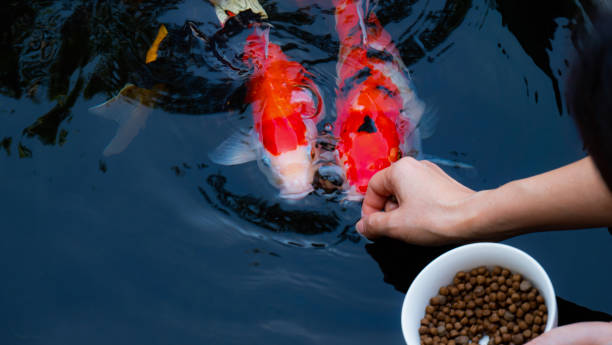
Pond Dimensions
One of the most significant factors is the pond size based on the koi type and its eventual length. Smaller ponds will cause your koi to strive for the room, tiring them out and preventing them from reaching their maximum size.
A full-sized giant koi may want up to 50 gallons of water in a pond at least 3 feet deep.
And the deeper and deeper the pond should be, the more koi you have.
Keep 10 gallons of water per inch of koi fish as a general guideline. Consider the requirements of any other fish kinds, if any.
Filtration is essential.
Koi fish, like all other types of fish, requires clean water. However, poor water quality causes unnecessary stress on koi, causing them to become unwell and possibly kill them before their time.
In this regard, we highly advise constructing a three-stage filtration system capable of handling mechanical, biological, and chemical filtering.
Mechanical filtration eliminates solid waste particles, whereas biological filtering removes ammonia and nitrate molecules. Toxins, chemicals, and colors in the water can also be removed via chemical filtration.
Furthermore, the filtration system should treat the whole water supply at least three to five times each hour.
Optimal Water Conditions
Koi thrive in ponds with pH levels of 7 to 7.5, and the optimal water temperature is approximately 70 degrees Fahrenheit. Remember that waste accumulation (such as leftover fish food and rotting plants) can cause pH changes.
Furthermore, because they are a hardy type, a water hardness level of roughly 80ppm (parts per million) should keep them healthy. A water testing kit may be purchased to monitor the water conditions regularly.
Diet
Because koi have a very quick metabolism, they must be fed at least thrice daily. However, ensure that the amount of food is sufficient for them to eat in 5 minutes every meal.
Regarding nutrition, they want a well-balanced combination of proteins, vitamins, carbs, and fats. As a result, you may give them a variety of foods such as peas, soybeans, melon, rice, shrimp, pork, lettuce, and so on. Make sure to provide the best koi fish food for them.
However, their digestion might slow dramatically throughout the winter, which is when you should convert to a low protein diet. During the summer, their metabolism is at its height, necessitating a heavy protein-based diet.
Population Stabilization
Given the size of most Koi fish species, it’s no wonder that they require a lot of space, whether in an aquarium or pond. Unfortunately, overcrowding in the water will stifle their growth and may even kill the young.
Furthermore, koi are a filthy species, especially in congested settings. So it won’t be long until they kill the “good” nitrifying bacteria, which work as a natural filter, keeping biological waste like ammonia at bay and preventing the water from becoming poisonous.
Furthermore, they swim at all water levels and hibernate beneath the surface during the winter. Overcrowding the pond or aquarium with too many koi or other fish kinds, on the other hand, might stress them out.
Genetics of Koi
Koi will not grow taller or larger than their DNA allow, no matter how extraordinary the circumstances and nourishment are. Japanese koi have high-quality genetics, and many western breeders have deliberately bred this type to produce many contemporary domestic koi that can reach full maturity at two.
Furthermore, their growth rate is greatest during the first year, a genetically determined characteristic.
Conclusion
There you have it, all the information you need to ensure that your Koi fish grows to its full potential. You should have a huge, healthy, and happy Koi fish in no time if you feed it correctly, give it plenty of space, and ensure optimal water conditions and parameters.

